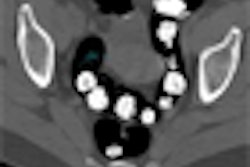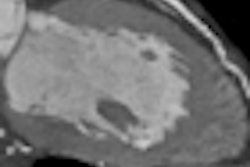Dear AuntMinnie Insider,
If reduced-prep virtual colonoscopy is ever to gain traction, advanced imaging tools will need to get smarter.
Patients generally consider the cathartic bowel prep -- standard practice for VC and essential for conventional colonoscopy -- to be the most burdensome aspect of colon cancer screening. Eliminating this untidy, uncomfortable, and time-consuming step would almost certainly increase the number of people willing to be screened, and a few studies have shown that eliminating laxatives is feasible if not optimal in VC.
On the other hand, radiologists find the unprepped studies more difficult and time-consuming to read, and experience suggests that sensitivity is lower in this environment. Tagging of fluid and residual fecal material to distinguish it from polyps and cancer certainly helps, but no regimen provides perfect tagging results.
Can advanced visualization bridge the gap? Researchers from Massachusetts General Hospital and Harvard Medical School in Boston believe their new toolkit is a good start. Neither a computer-aided detection (CAD) system nor an electronic cleansing scheme, the image processing methods presented last month in Barcelona aim to render residual stool more obvious and, therefore, less likely to fool a CAD system or a radiologist into calling a false positive.
What exactly do these tools do and how well do they work? Find out in this issue's Insider Exclusive, brought to our VC subscribers before it's available to other AuntMinnie.com members.
Also on the subject of laxatives, a little goes a long way according to researchers from the Academic Medical Center (AMC) in Amsterdam. Increasing the dose not only displeased the screening subjects, it didn't make the datasets any easier to read, leading to an apparent case of pain without gain.
VC may not be the best choice when fecal occult blood tests (FOBT) turn up positive, according to another study from the AMC. Despite the low sensitivity of this screening option, so many positive FOBT patients also had positive VC exams that colonoscopy might have been a more efficient diagnostic path, at least in this small screening cohort.
Want to learn how to perform virtual colonoscopy on your own schedule? Radiologists from Belgium's Virtual Colonoscopy Teaching Centre are ready to assist with a teleradiology-based teaching program being offered in the U.S. with assistance from the University of Arizona in Tucson.
Last but not least, researchers from Italy have launched a VC study that uses CAD as a primary reader. If it's about VC, you'll find it in your Virtual Colonoscopy Digital Community.




















